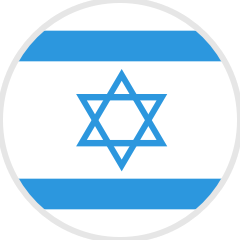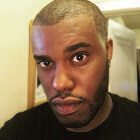Learn How To Pronounce Croissant the Right Way
We want you to think about a fresh, warm, buttery, and flaky French croissant to start your day on a delicious note. Do you have that image in your head? Great! Now, as you bite into that crispy on the outside, fluffy on the inside goodness, let’s reveal how to pronounce croissant and some curious facts to make your croissant-eating experience even more enjoyable.
And if you’re serious about becoming a fluent speaker of French, you can tap into our comprehensive list of French language resources right here.
Introducing the French croissant
We’ll start with the definition of croissant: a roll made with yeast-risen dough layered with butter, then rolled and folded several times. The dough is cut into triangles and rolled into a crescent shape. Is your mouth watering already?
Next, to help you with your French pronunciation of croissant, we’ll break the word down into two syllables: croi + ssant. You pronounce croissant’s first syllable [kʀwa] as that is the standard pronunciation for French words starting in “croi,” such as croître [kʀwatʀ] (to grow). The second syllable is pronounced [sɑ̃] because the t’s at the end of French words are generally silent. And there you have it: [kʀwaˈsɑ̃]!
How do you spell croissant?
Now that we’ve covered the croissant’s French pronunciation, let’s talk about how to spell the word.
Because of the heavy French influence on English grammar and vocabulary, and their common Latin roots, thousands of modern English words derive from these two languages. That is why you will find that the spelling of croissant is the same in English and French: C-R-O-I-S-S-A-N-T…et voilà!
Croissant origin and recipe
Let’s take a short break from learning how to pronounce croissant to talk about its fascinating origin. It starts in Vienna with its ancestor, the kipferl. This pastry was thicker and sweeter than the croissant, and it looked more like a crescent-shaped cookie.
The first official appearance of a croissant in France was in the early 1800s. It was a kipferl-style recipe by the baker August Zang, a native of Vienna who owned a famous pâtisserie (pastry shop) in Paris. Zang’s version of the kipferl was flakier, and it grew more popular even after he returned to Austria. That’s when French baker Sylvain Claudius Goy created the croissant recipe as we know and love it today.
So what goes into this crescent-shaped delight? Let’s find out the main ingredients in a croissant and how to pronounce them in French:
- Farine [faˈʀin] (flour)
- Levure [ləˈvyʀ] (yeast)
- Sel [sɛl] (salt)
- Sucre [sykʀ] (sugar)
- Lait [lɛ] (milk)
- Eau [o] (water)
- Œuf [œf] (egg) (singular)
- Œufs [ø] (eggs) (plural)
- Beurre [bœʀ] (butter)
If you liked the sound of these, why not head on over to our Learn French page right now for more pronunciation tips and resources?
The French croissant comes in a few popular varieties. One famous example is the pain au chocolat [pɛ̃ o ʃɔkɔˈla] (chocolate bread). It’s made from the same dough but is not rolled into the famous crescent shape. Instead, it has one or two pieces of chocolat noir [ʃɔkɔˈla nwaʀ] (dark chocolate) in the center while having the same fluffy texture as a croissant. For extra flavor, you can also add some confiture [kõfiˈtyʀ] (jam) to your croissant.

Image by Jan Vašek from Pixabay
Is it croissant o’clock yet?
With that delicious information, the next time you’re at a fragrant French boulangerie [bu.lɑ̃ʒ.ʁi] (bakery), order your croissant with the confidence of correctly pronouncing it and the knowledge of and respect for its history.
The only thing left is for you to savor all that light and crispy goodness quicker than you can say “J’adore les croissants” [ʒadɔʁ le kʁwasɑ̃] (I love croissants) in perfect French pronunciation!
Want to learn French and never forget it? Download the Fluent Forever app today, or sign up for personal language coaching to take your French to the next level.
[shareaholic app="share_buttons" id="28313910"]

















